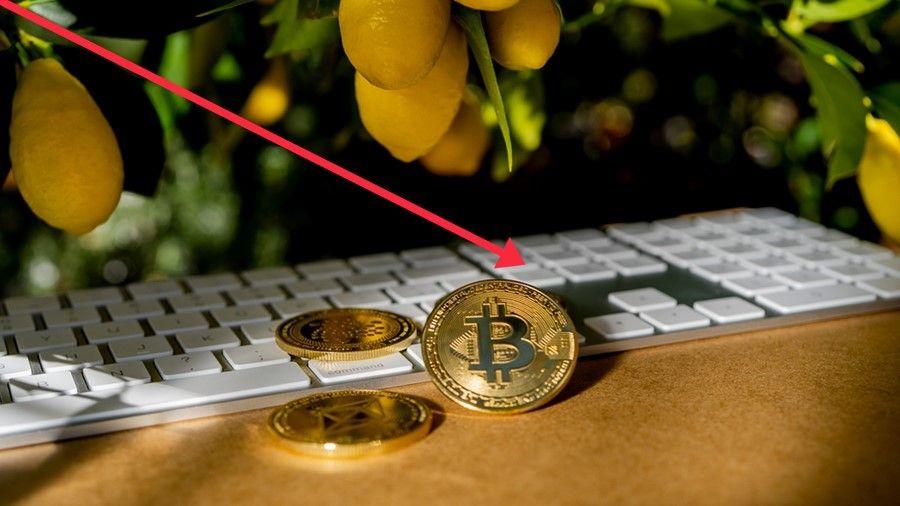Lemons sour the market for crypto

Millennials have a reputation for avoiding the purchase of cars. The money they have saved by not owning a car has undoubtedly allowed them to invest in cryptocurrency. Avoiding the purchase of a car however may have left millennials without a key skill that everyone in cryptocurrency should have. Buying a car can be a distasteful and arduous process, especially for the young and buying crypto can be in the same class.
But it is the process of kicking the wheels and looking under the hood in buying used cars that teach us to be careful about buying something which we do not understand. And few of us can say that we really understand cars or cryptocurrencies. But it is even worse than that.
We are cautious because somewhere in the used car lot is a real lemon. One that we might buy without knowing it. And all the salespeople are smiling saying that their cars are the best and that none of them are lemons.
Now for crypto. It is the rare buyer of crypto that really knows the quality of the coin they are purchasing. It is the originators of the coin who have the information. In all likelihood, it is buried in the computer code that they wrote. So, the key information about the coin is likely to be known by a limited number of individuals. And, as we see repeatedly, crypto has its own lemons buried in the mounds of coins, altcoins, and other species of crypto. And all an investor’s coin kicking, like kicking the tires on a car, will not tell us the quality of the coin. For all the world, the seller cannot tell the good from the bad. So, what does the used car lot teach us about pricing a cryptocurrency?
Pricing lemons
The problem of how to price a lemon was first tackled by George Akerlof in 1970. He wanted to know how people priced products with different quality when the information about them was in the seller’s hands. Akerlof actually studied used cars which is why we started this report by talking about buying a used car.
What price is a person willing to pay when they know that the car, or the coin, could be a lemon? The used car lot and the crypto exchange hold both lemons and premium products on any day. Intelligent buyers do not offer the highest price, say $1000 for a particular coin, nor do they offer zero. If they offered zero no one but the lemons holders would sell, and the market would collapse. If they offered $1000, they would clearly be paying too much on average.
Crypto is a market for information, not just innovation
The crypto market is usually thought of as a market for innovative technologies which are blockchain-based. But there is more to it. The crypto market is a market for information as well as innovation. The right price for crypto coins is not prime quality because there are lemons, but neither is it the lowest. If the price offered in the market were the price for a lemon, all the sellers of non-lemons would withdraw their offers. Remember the seller knows the quality of the coin but not the buyer. The general answer was that people would price all the cars as though they were possibly but not certainly lemons.
That the seller of the coin knows the quality of the coin but not the buyer makes the information asymmetric. One side knows more than the other. In this case, the buyer should be thought of as the whole group of uninformed buyers. And the sellers can be thought of as the “in the know” whales.
In fact, the lack of information about cryptocurrencies can make them a significant cyber threat. The asymmetric information structure of the cryptocurrency industry certainly admits the existence of many lemons. This has been noted before but the current crypto winter makes it necessary to appreciate the very lemon-ness of crypto. It is the role of regulators to compel crypto exchanges and crypto sellers to inform buyers of the need to “kick the tires” before purchase.
The asymmetric information, that the seller knows which coins are or are likely to be lemons, makes the cryptocurrency market highly speculative. There are many documented frauds like “rug pulls” which occur in crypto. And it is growing in frequency. Successful frauds will attract more frauds, too.
Information is more than data
The cryptocurrency space is full of data - statistical data on orders and flows. Certainly, there is information in those numbers, which may help timing purchases and sales. Data on flows is only one type of information, however, it is data on the quality that has been the subject of investors’ concerns and investigations. And it is the asymmetric information that enlightened regulation should attempt to address.
After the many frauds in the industry, regulation is clearly coming. But these regulations, if they are well constructed, will serve to limit the asymmetric information but not the technology. Investors are free to buy or sell securities that rise or fall with the technology. Nor does it matter how risky the technology happens to be or whether we agree with the investment. The regulations, however, need to level the market for information. This will be to the benefit of all.
We hope you enjoyed this article. Please give us your feedback. And don't forget to share this article, if you liked it.
This article is not intended as investment, tax, or financial advice. Contact a licensed professional for advice concerning any specific situation.





